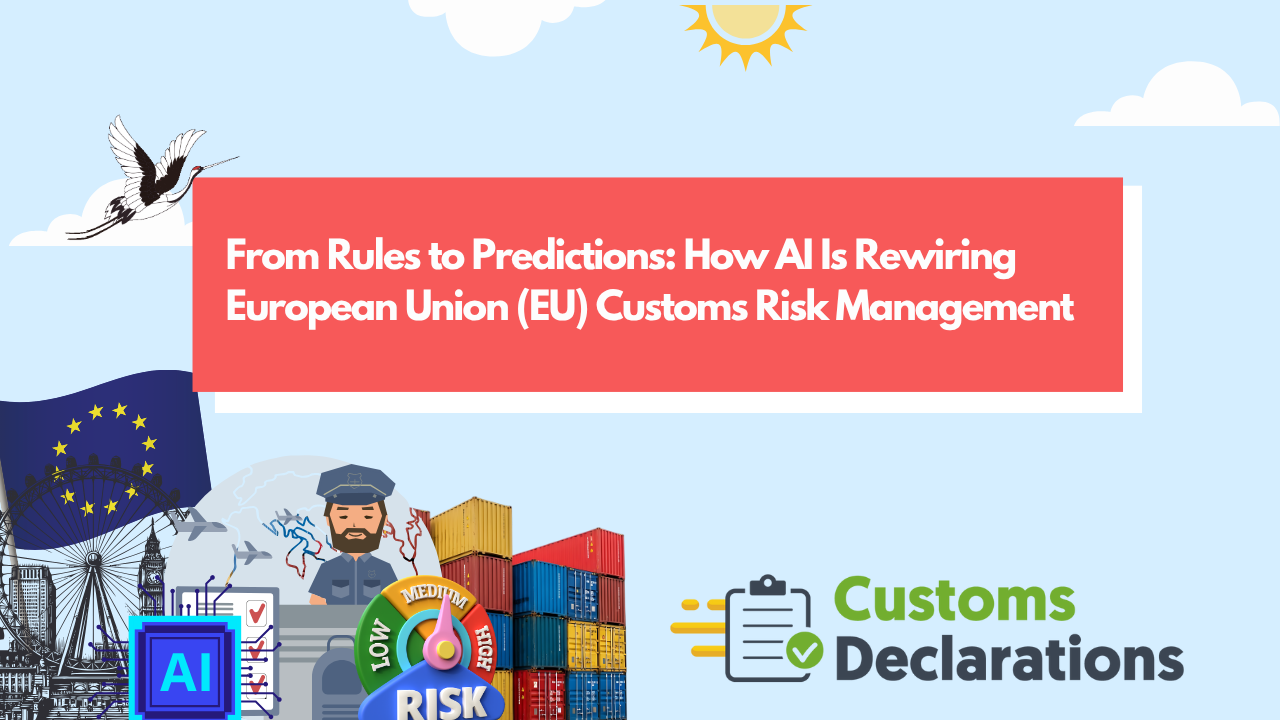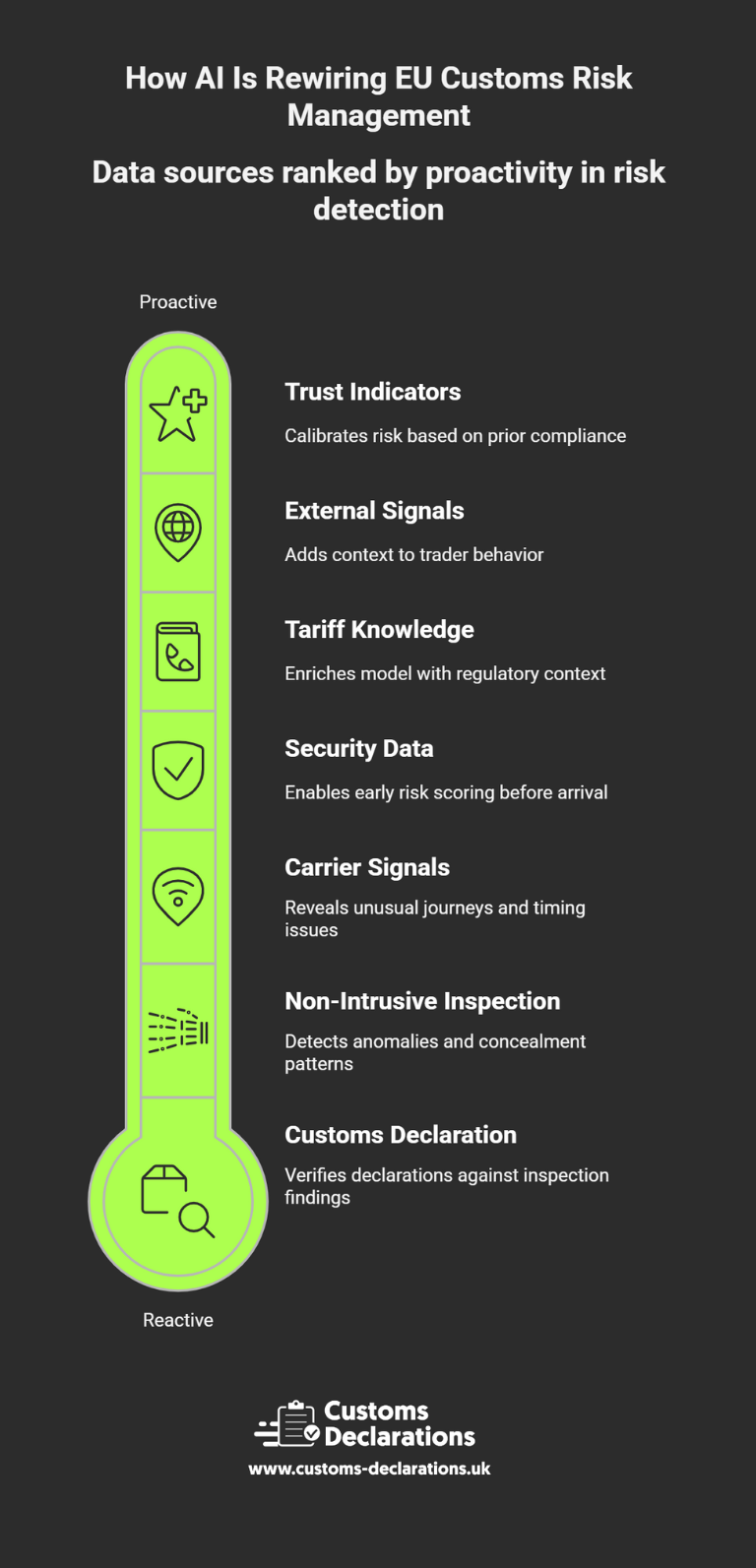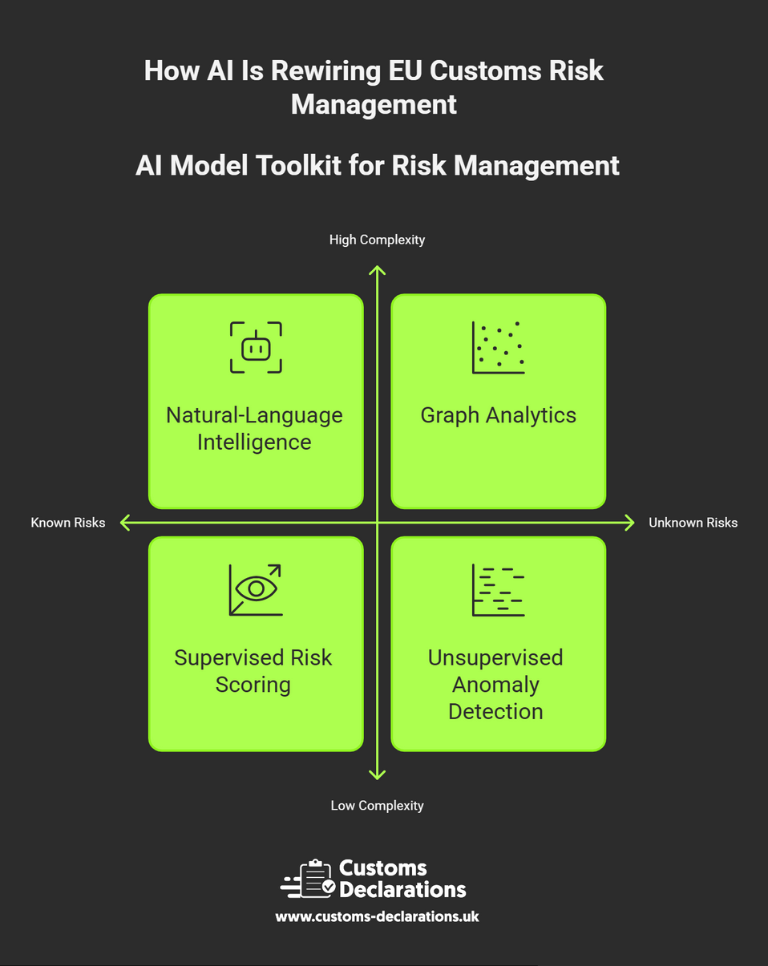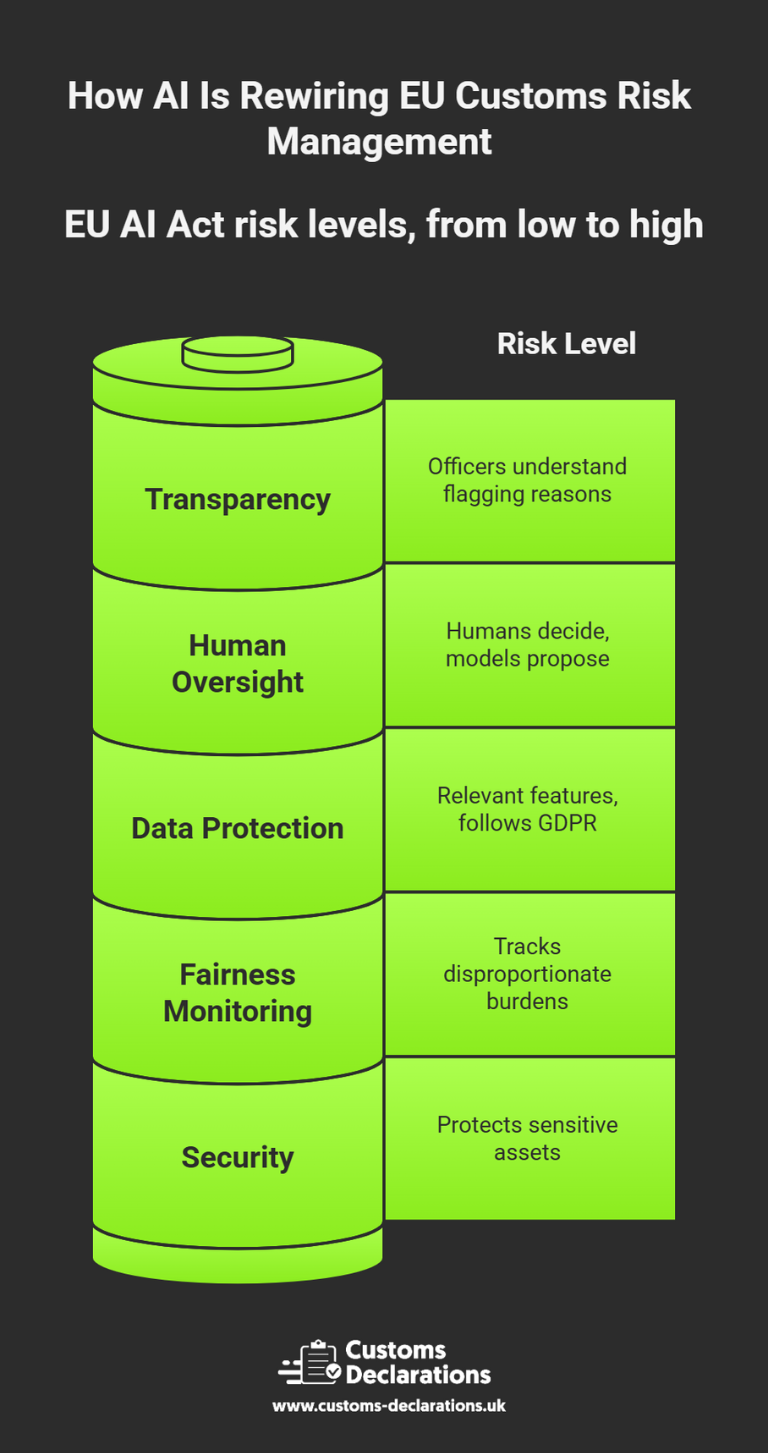Executive summary
European customs administrations are under contradictory pressures: stop more fraud and unsafe goods, but release compliant consignments faster. For two decades, the Union Customs Code (UCC) and the EU Customs Risk Management Framework (CRMF) leaned heavily on rules-based targeting. That era isn’t over—but it is being augmented by machine learning (ML) and advanced analytics that score risk probabilistically, learn from outcomes, and uncover new schemes before they harden into patterns.
This article explains the shift from static rules to predictive risk management, what data and models actually power the new approach, the measurable impact on detection and clearance KPIs, and how to adopt AI responsibly under the EU’s governance expectations. It closes with a practical section on filing customs declarations through the Customs Declarations UK (CDUK) platform so your import declarations, export declarations, CDS declarations (for UK legs) and ENS declarations are ready for the data-driven border.




